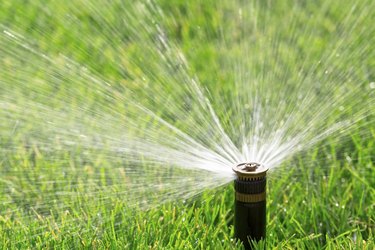
Automatic irrigation valves allow homeowners to turn their sprinklers on and off unattended and without consideration--once the initial programming is done. The valves are controlled by a computerized controller or "clock" and are operated by safe, low-voltage AC power. They do their work in a very hostile environment. They're constantly surrounded by dirt, water and bugs trying to infiltrate their delicate innards and wreak havoc. Years of development have led to designs that do a remarkable job of keeping that stuff out and keeping the water flowing.
Safety Considerations
Video of the Day

Twenty-four volts isn't much, as electricity goes. In fact you won't even feel a shock if you touch it--even in a muddy irrigation trench. It would not be strong enough to open a mechanical valve capable of holding back 40 to 80 pounds per square inch (psi) of water pressure. No one wants high voltage power running throughout their yard nor all the moving parts that would be involved in a normal mechanical valve, nor a valve that has to have power to close.
Video of the Day
Solenoid Valve Design
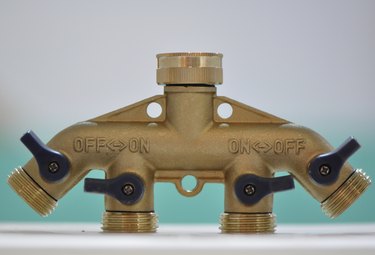
The solution is a solenoid valve. A rubber diaphragm covers inflow and outflow ports keeping the valve closed. A tiny hole in the middle of the diaphragm allows water into an upper chamber. As long as the pressure is the same on both sides of the diaphragm, the valve remains closed. Inside that upper chamber, a small vent leads to the outflow side of the valve. A small plunger keeps that vent closed and the pressure equalized. When power is applied to the solenoid, an electromagnet lifts the plunger and water flows through the vent, decreasing the pressure above the diaphragm, which pulls it off the ports. Water flows through the ports, down the pipes and on to the sprinklers.
Controller Signal
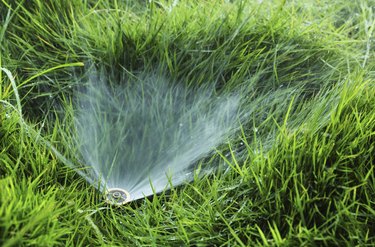
The irrigation controller tells the valve when to open and close. When the clock reaches the programmed time, 24 volts is applied to the lines running to the solenoid. The current is applied to the solenoid until the clock reaches the end of the programmed time.
Fail Safe
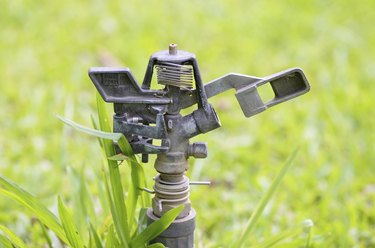
One particularly clever feature of this design is that if things fail, it is most likely that the valve will fail in the closed condition, preventing the loss of thousands of gallons of water, should a power outage occur while a valve is open and unattended. If the controller loses power in the middle of a watering cycle, the solenoid shuts off, the plunger falls in place and the valve closes, without power.
Service Considerations
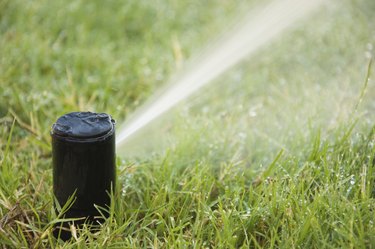
If a valve seeps, most likely there's a tear in the diaphragm or some sand preventing the diaphragm from sealing completely. If a valve won't open, there might be a problem with the wires between the the controller and the valve or it could be a faulty solenoid. This can be confirmed by trying to open the valve manually. If it works manually, test the solenoid. If the solenoid tests out okay, check all connections and look for spots where digging might have cut the wire between the valve and the controller.